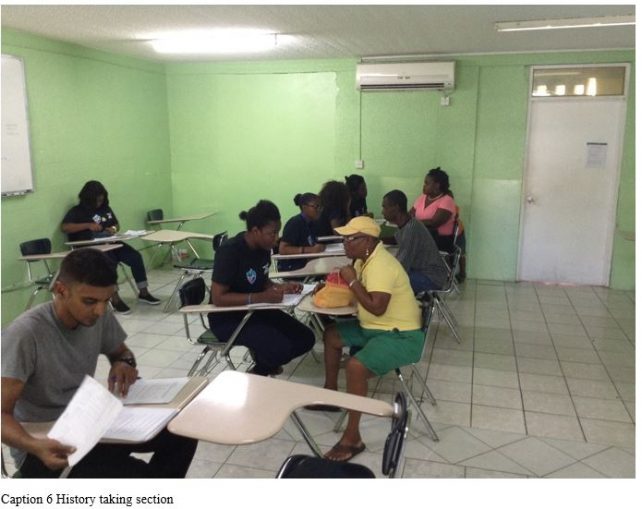
INTRODUCTION
All Saints University, School of Medicine (ASUSM) located in Roseau, have been well known for providing free health checks within the school premises for the general public under the license of the Ministry of Health, Dominica. The university does this by organizing health fairs which is organized and coordinated by the American Medical Student Association (AMSA), ASUSM.
Health checks carried out during the health fair are usually preliminary and include history taking, blood glucose tests, blood pressure assessment, visual acuity, body mass index, sonographic diagnosis (for special cases), and free consultation from medical professionals. Consultations during the health fair are however largely restricted to minor medical conditions which can be handled on the spot by the University’s registered physicians and cases requiring further investigations and follow up are referred to Princess Margret Hospital for further management.
Aside consultations, the tests are performed by medical students who have undergone 3 months training in preparation for the health fair with careful scrutinization by the AMSA group leaders and the faculty advisor. The health fair profits the public by providing an avenue for locals to check their basic health status for free and this is also one of the numerous ways the University gives back to the community.
This fair also benefits the students in the way of improving their patient communication and clinical skills. Although, ASUSM is the main sponsor of the event, the health fair also receives contributions from various establishments in Dominica. Considering that it’s an all-day long event, some little refreshments are made available for the patiently waiting participants.
HEALTH FAIR SUMMARY
The last health fair held on the 3rd of December, 2016 from 9am to 4pm, under the leadership of Bello Ayomide Joel (President, AMSA, ASUSM). Establishments such as Dominica Broadcast Station, Princess Margret Hospital, Dominica Breweries, J.E. Nassief, Witchurch, Jolly Pharmacy, and Flow participated in making the health fair a success. The health fair took place within the school premises. A total of 10 doctors were present for free consultations during this event.
STATISTICAL REPORT
A total of 139 Dominicans came for the health fair. 55 (39.57%) and 84 (60.43%) were males and females, respectively. The age distribution of the participants are shown below (Table 1). Blood pressure readings (Fig 1) showed that most participants above 40 years had irregular blood pressure readings.
Table 1 Age group of participants during the health fair.

Figure 1 Health fair blood pressure readings
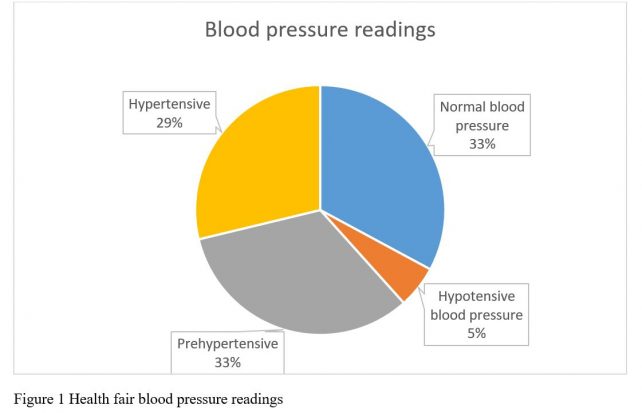
A total of 75 (52.45%) had significant increase in random blood sugar levels which was predominant among participants above 31-40 years. Body mass index used to identify degree of fatness (Fig 2), also showed that most participants who were either overweight or obese fell into the age range of 50 years and above.
Figure 2 Body mass index of participants during the health fair

Visual test showed that among all the participants, only 7 (5.43%) participants had optimal vision in both eyes, and these were mostly young adults between 21-30 years. However, the remaining 122 (94.57%) participants who did the visual test did not have optimal vision in both eyes.
DOCTOR’S CORNER:
All Saints University professors/physicians contributed immensely in free consultations and counselling to the participants at the fair in their areas of specialty such as Orthopedics, Psychiatry, Ear Nose and throat (ENT), dermatology, general practice and biomedical imaging.
Dr. Fakoya, a professor at All Saints, who is also a registered medical practitioner in Dominica performed an ultrasound scan of the heart generally known as echocardiogram on about 75 participants at the fair. The scan involved a quick but fairly detailed check of the commonly affected heart valves such as the mitral, tricuspid and the aortic.
Also, the ventricular (chamber) walls and interventricular septal (partition) thicknesses as well as the aortic root diameters were checked for any aberrations.
In all, the findings during the scan were not worrisome as most were largely within the normal ranges but a few however (about 10-15%) were in keeping with underlying heart problems like ventricular and septal wall enlargement from uncontrolled hypertension, slight valvular defects, and two cases of dilatation of the root of the aorta were found. One of which is a known hypertensive who had been previously diagnosed with root dilatation and the other was in an 84-year-old participant, not a known hypertensive and had a normal blood pressure, he was however counselled about our findings.
Figures 3 and 4 show a few of the measurements taken during the echo whilst figure 5 shows the dilated aortic root seen of one of the participants.
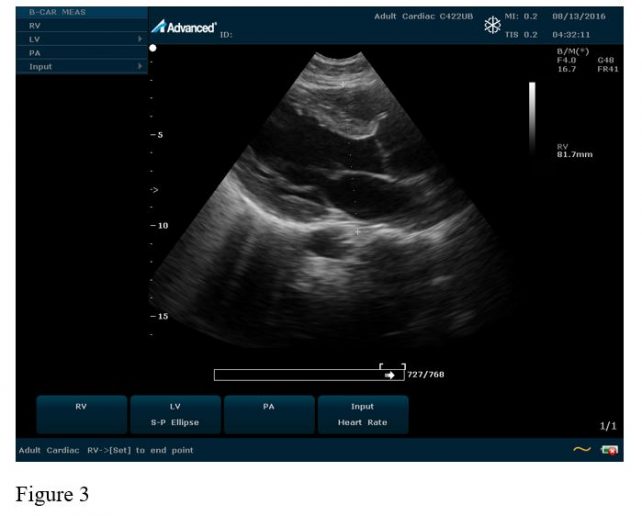
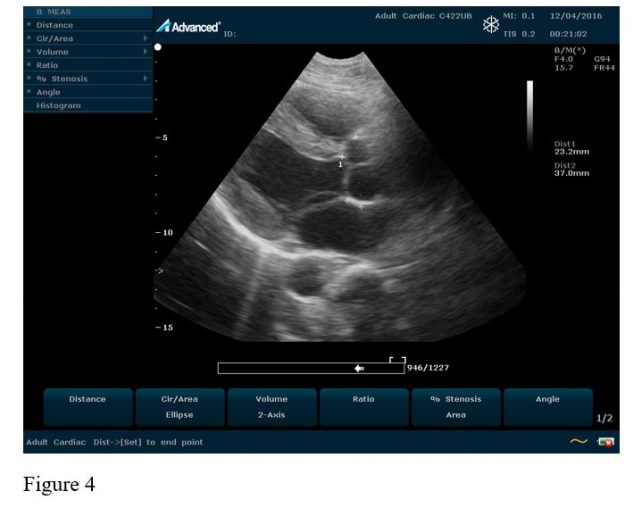
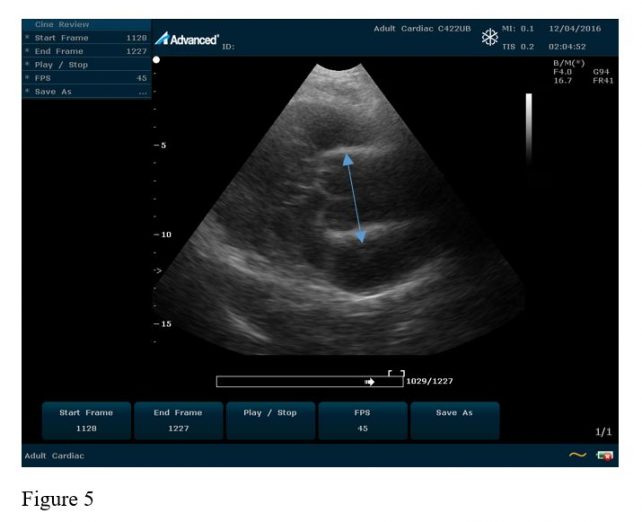
SUMMARY AND RECOMENDATIONS.
From the data analysis, three major health risks were highlighted in the participating population. However, it should be noted that the middle aged and the elderly accounted for about 70-80% of the participants.
Below is the summary;
1. Almost 70% of the participating population were overweight and over.
2. Over 60% of the participating population were pre-hypertensive and over.
3. Over 50% of the participating population had a deranged random blood sugar.
Also, the visual disturbances recorded in about 90% of these participating population might be attributed to several factors to include the above major health risks.
Theoretically, the above listed findings are not surprising as these three are all medically interrelated and could be categorized under the condition called the “metabolic syndrome” which should include abnormal biochemical parameters for cholesterol and triglycerides which we however did not check in these population.
And as demonstrated from the data, it all starts with an increasing obese population, especially with an increasing weight around the waist.
Subsequently, these fatty tissues release some abnormal chemical mediators which make the small blood vessels become narrower (constrict) which will result in a gradual in increase in blood pressure and likewise, these abnormal chemical mediators make the cells and tissues to gradually become resistant to insulin (used for uptake of sugar from the blood) resulting in abnormal blood glucose levels and thus, the likely development of diabetes mellitus.
Impact:
Individual: The above listed would result in an increased risk of developing diabetes as earlier mentioned, increased risk of vascular problems like coronary heart disease and stroke resulting in a reduced quality of life, with an increasing financial burden.
Government: If these health risks are not carefully watched and modified, these might culminate into an increasing financial burden on the government, a gradual drop in the healthy working population and an eventual drop in revenue. As at 2014, Dominica was noted to have the highest percentage of Centenarians in the world and a country notable for her high life span. I believe we would not appreciate a decline in these indices but rather an improvement.
Medical recommendations:
1. Dietary and lifestyle modifications. However, these are two big chapters that goes way beyond what we can address here and largely involves both individual and political will.
2. A more regular basic health status check to include visual checks is recommended.
3. Compliance to prescribed medications and medical counsel is strongly recommended.




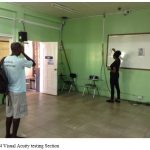
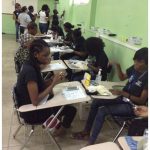

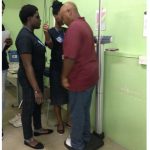
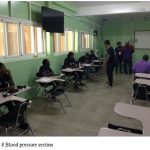

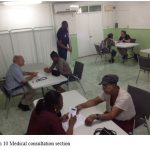


Great work All saints, I see lots more progress to come in the future..thanks for the contribution to Dominica…
This is a marvelous contribution by All Saints University Medical School,, It does highlight some important health problems that Dominicans should pay attention to..high blood pressure, obesity, diabetic risk, etc
Great press release… It’s really great that they have complied the data and made it available to us though this medium.